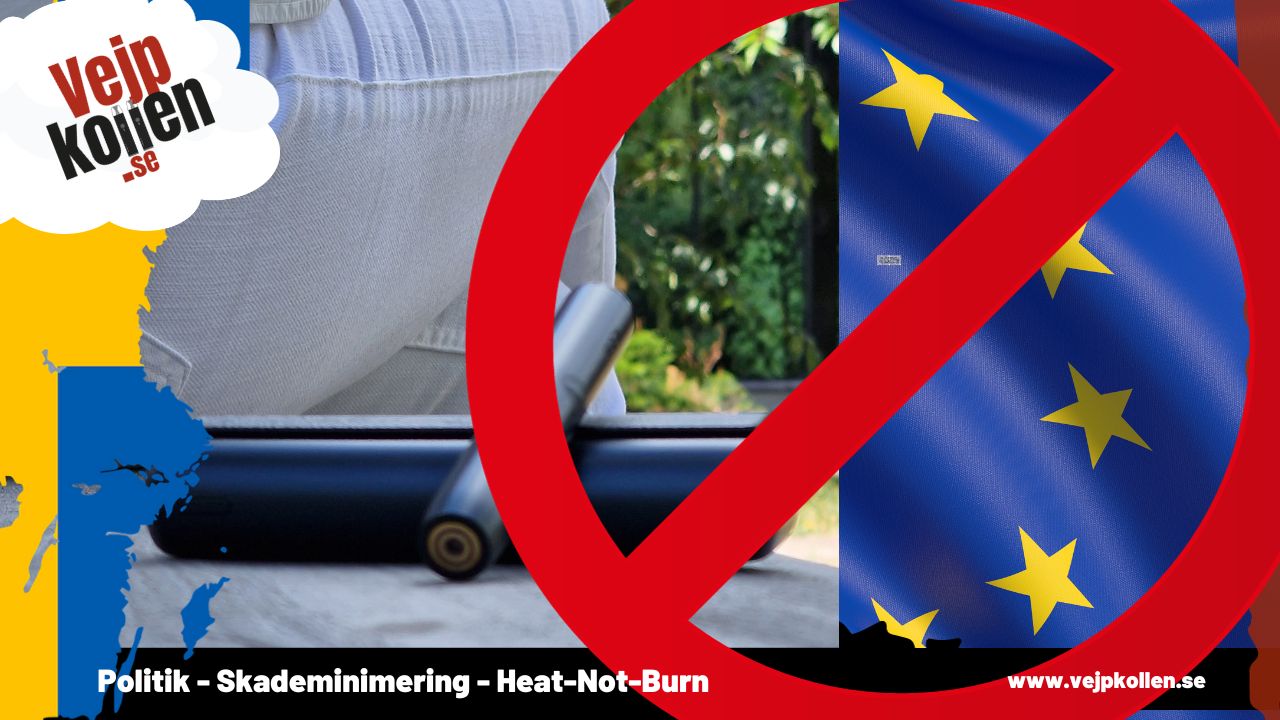Heets and Terea - the tobacco-filled sleeves used to vaporise tobacco in the IQOS system - will no longer be allowed to have a taste or smell other than tobacco. This is now proposed by the government in a legislative proposal, following pressure from the EU.
The government proposes a flavour ban on heated tobacco. If the proposal is adopted, it will mean that tobacco, used in IQOS and other products, can only be flavoured with substances "that give a taste and smell of tobacco". At the same time, packets containing heets and terea would carry warnings similar to those on cigarette packets.
Flavour ban on e-cigarettes voted down
Just last year, a majority in the Parliament voted against a similar proposal to ban flavours in e-liquid and e-cigarettes. The same majority also wanted to examine the possibility of introducing a harm minimisation as part of tobacco and nicotine policy. A ban on flavours was then considered contrary to that objective. Unheated tobacco is also considered a harm-reducing nicotine product. However, according to the government, the flavour ban for HNB products and the proposed legislative amendment are an alignment with EU legislation.
"The Government notes that a ban on heated tobacco products with a characteristic flavour must be introduced into Swedish law in order to implement the delegated directive. The directive leaves no room for Member States to refrain from introducing flavour restrictions for heated tobacco products." the legislative proposal statesget
Lack of clear definitions
Several referral bodies wanted a clear definition of what should count as smoking tobacco and smokeless tobacco and what does not. According to several Swedish municipalities, which have supervisory responsibility, it is important to be able to distinguish between the products during an inspection. Japan Tobacco International and Philip Morris International wanted the tobacco in heat-not-burn products to be defined as "smokeless". The basic technology for heat-not-burn requires the tobacco to be vaporised, without combustion, to work properly.
Leaving everything to the authorities
But the government does not want to include a definition of which products the new requirements will ultimately apply to in the law. It prefers to leave this to the municipalities themselves, the Public Health Agency of Sweden or, ultimately, a court.
"The definition of tobacco and various tobacco products are concepts that are well established in Swedish law," the government writes in its proposal. "It may therefore be left to the Public Health Agency of Sweden and the municipalities, in their capacity as supervisory authorities and courts, to develop practice regarding the characteristics that determine whether a heated tobacco product is to be considered smokeless or a tobacco product for smoking.
Unclear about health warnings
At the same time as the flavour ban enters into force, packages containing heatsticks will also be labelled with warnings. However, it is unclear whether unheated tobacco should be counted as smoking tobacco or smokeless tobacco, which determines which warnings should be placed on the packs. Here too, the Government proposes that the Public Health Agency of Sweden develops guidelines for practice.
If the new law is voted and approved by Parliament, it will apply from 1 May 2024.
Facts: Heat-Not-Burn
- PMI's vaping product IQOS, but also BAT's GLO, is a combination of a cigarette (tobacco) and an e-cigarette (vaporisation via heating).
- In some countries, such as Japan, IQOS is a success story, with over a quarter of PMI's customers preferring IQOS to traditional cigarettes. In the rest of the world, such as Europe, IQOS is somewhat less popular, although it is available in most EU countries. The greatest uptake is in Eastern Europe and the Baltic States.
- In Sweden, some larger chains such as Pressbyrån sell IQOS. The heat-not-burn system is also available in some convenience stores.
Few independent studies on HNB
- Heat-not-burn (HNB) products have been on the market since 2014. The technology is based on the heating of tobacco: a sleeve containing a tobacco blend is heated in the same way that e-liquid is heated in an e-cigarette. This produces a vapour at a lower temperature and without combustion.
- The health risks of HNB products are likely to be less than those of tobacco smoking. However, the UK Public Health Agency, a world leader in tobacco harm reduction, recognises that the evidence base for assessing the health risks of HNB is currently thin.
"HNB products are likely to emit fewer toxic chemicals than cigarettes, but more harmful substances than regular e-cigarettes," writes the UK's Department of Health in its annual report on risks of e-cigarettes and related products, 2018. - Of the 20 studies the agency has reviewed, 12 originated from the tobacco companies themselves, says the UK Public Health Agency.
- "The studies suggest a harm reduction effect for smokers, but we need more independent studies to draw firm conclusions," says the UK authority.





Flavouring Heets yourself is very easy, there are already many products, such as paper and sprays that came when the EU banned methanol cigarettes. Another stupid and unnecessary proposal that could lead to fewer people choosing something other than cigarettes.